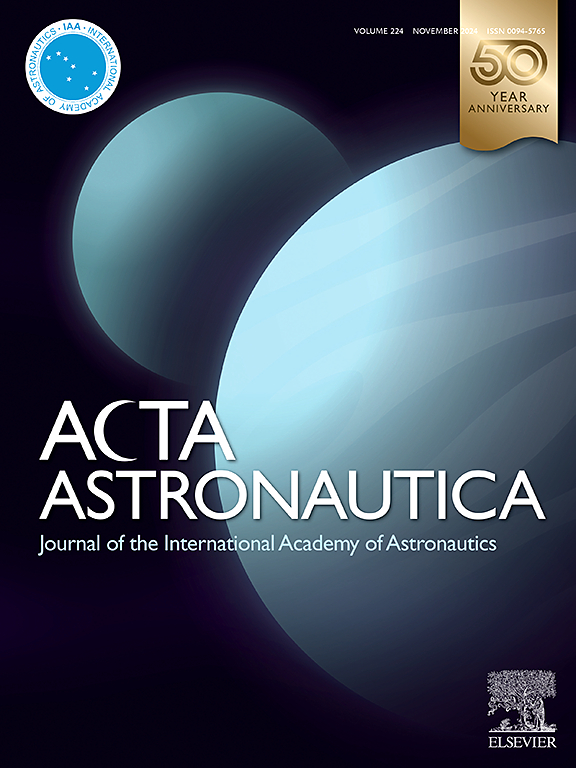清除空间碎片的服务航天器
IF 3.1
2区 物理与天体物理
Q1 ENGINEERING, AEROSPACE
引用次数: 0
摘要
几乎每个参与空间探索的国家都在研究从近地空间清除空间碎片的问题。这是因为预计在不久的将来,特别是由于出于各种目的对多卫星星座的需求大幅增长,空间碎片物体的数量将急剧增加,从而对全球构成威胁。迄今为止,研究人员已经提出了大量不同的空间碎片清除方法。本文介绍的工作是开发一种利用离子束清除空间碎片的前景看好的非接触式方法。本文介绍了对安装在服务航天器上的离子源的物理过程进行建模和优化的结果,这是实施所考虑的空间碎片清除方法所必需的。此外,还介绍了离子源运行期间的热建模和热绘图结果,并将其输出参数的计算结果与实验数据进行了比较,实验数据验证了所产生离子束的发散角较小。为了利用所获得的离子源工作参数数据评估使用离子束非接触式空间碎片运输系统的前景,进行了轨迹设计和飞行任务分析,结果表明用一个服务航天器将七个空间碎片物体移出地球静止轨道保护区是可行的。此外,还介绍了服务航天器的初步设计。本文章由计算机程序翻译,如有差异,请以英文原文为准。
Service spacecraft for space debris removal
The problem of space debris removal from the near-Earth space is being studied in almost every country taking part in space exploration. This is due to the global threat of critical increase in the number of space debris objects predicted for the near future, in particular as a result of significant growth in demand for multi-satellite constellations for various purposes. To date, researchers have proposed a large number of different methods for space debris removal. The work presented is the development of one of the promising contactless methods of space debris removal by an ion beam. The results of modeling and optimization of physical processes in the ion source to be mounted on board a service spacecraft that is necessary for implementing the considered method of space debris removal are presented. Besides, the results of thermal modeling and thermal mapping of the ion source during its operation are presented also, and the calculation results of its output parameters are compared to experimental data, which verified the small divergence angles of the generated ion beam. To assess the prospects of using a system for contactless space debris transportation by an ion beam using the obtained data on the operating parameters of the ion source, the trajectory design and mission analysis were carried out, which revealed the feasibility of removing seven space debris objects out of the protected region in geostationary orbit by a single service spacecraft. Besides, the preliminary service spacecraft design is presented.
求助全文
通过发布文献求助,成功后即可免费获取论文全文。
去求助
来源期刊

Acta Astronautica
工程技术-工程:宇航
CiteScore
7.20
自引率
22.90%
发文量
599
审稿时长
53 days
期刊介绍:
Acta Astronautica is sponsored by the International Academy of Astronautics. Content is based on original contributions in all fields of basic, engineering, life and social space sciences and of space technology related to:
The peaceful scientific exploration of space,
Its exploitation for human welfare and progress,
Conception, design, development and operation of space-borne and Earth-based systems,
In addition to regular issues, the journal publishes selected proceedings of the annual International Astronautical Congress (IAC), transactions of the IAA and special issues on topics of current interest, such as microgravity, space station technology, geostationary orbits, and space economics. Other subject areas include satellite technology, space transportation and communications, space energy, power and propulsion, astrodynamics, extraterrestrial intelligence and Earth observations.
 求助内容:
求助内容: 应助结果提醒方式:
应助结果提醒方式:


